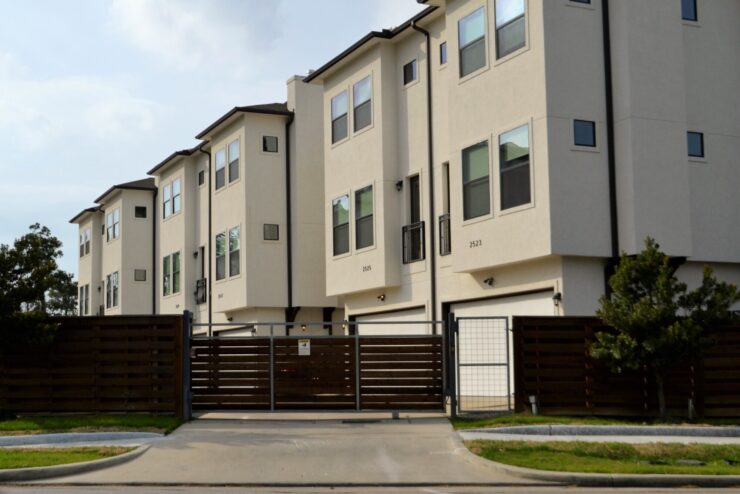Over 100 million people in the United States rent where they live. That number continues to swell as foreign investments and widening pay gaps inflate housing prices to unreachable points for the average person.
With renters on the rise, many have taken that as a cue to start investing big time in real estate, particularly in rental properties. If you’re in that boat and are thinking of getting your hands on pieces of property, you’re in the right place.
Rental investments can be every bit as lucrative as you suspect. They can also bankrupt you if you’re not careful.
Below, our team breaks down the basics over the course of 7 tips that’ll help you get on track as a landlord. Keep reading to take in everything you need to know!
1. Check Your Patience
Even if you’re flush with cash, getting your hands on quality rental properties takes time. There’s the process of finding properties, securing financing, negotiating, working with property management agencies… The list goes on.
With all of that in mind right now, you have to be honest with yourself about your willingness to approach your foray into being a property owner as if you’re running a marathon. If you’re someone that gets gassed out on ideas after getting really excited about them for a week or two, save yourself the trouble and don’t spend time exploring the possibility of investment properties.
2. Get Real About Your Financial Situation
Unsurprisingly, acquiring investment properties costs money. You may hear lines from real estate gurus about scooping up properties without spending a dime via wholesaling, etc. Do yourself a favor and turn down the volume on that noise.
The most streamlined, safest, and conventional way to get property is to pay for it. We recommend going that route.
With that said, get your credit in order and brush up on any other financial clouds you may have looming over your head so you can confidently discuss lending possibilities with banks.
3. Save as You Study
There’s a lot to learn about acquiring investment properties and even more to learn about particular communities, property types, and so forth. Make it a point to dive into all of that information and while you do, start getting serious about saving.
When you go to a lender to ask them to fund a portion of your investment, you can expect that they’re only going to lend anywhere from 90% to 75% of your property’s value.
That’ll likely mean you’ll need to come up with thousands of dollars to complete your purchase. If you don’t have that kind of money on hand, start working towards getting it.
4. Understand the Implications of Locations
You don’t want to invest in every neighborhood. Some neighborhoods, given their socioeconomic stability, are notorious for skipping rent payments, damaging property, and causing other headaches for landlords.
Understand what those C and D class neighborhoods look like and avoid them.
People that make property investments in neighborhoods that have high rates of default will end up taking on the full-time job of chasing down rent and going through eviction processes.
If you want to invest in buy to let property look for helpful guides like this one from RWinvest. Choose a location that you are familiar with and has minimal local issues such as traffic problems and a high crime rate. If the location can provide a safe environment to tenants and offers good local transport, and schools, you’re more likely to have success with your rental.
5. Start Building Your Team by Bringing on an Agent
Your team is the most important piece of your success puzzle when you invest in rental properties. Among the many slots you’ll fill on your team, your real estate agent may be your most important member.
To find a quality agent, zero in on a general area you might like to invest in. Try to get at least as specific as the state or county you like. From there, run internet searches, scrub forums, and ask around to see which agents specialize in working with investors.
Interview the candidates that look most promising and have the agent you choose to work with guide you through the next steps.
6. Assemble The Rest of Your Team
After your agent is on board, you’ll need to start sourcing other team members. Usual suspects include a lender, a contractor, and a property manager.
Your lender will be a top-priority addition since you won’t be able to put an offer on rental investments without one. When you’ve identified a property that you like, based on its structural needs, you’ll then want to engage a contractor, and ahead of closing your deal, you’ll want to get an understanding of which property managers in the area serve that community.
7. Learn How to Calculate Margins
Do yourself a favor and find a good margin calculator tool online for rental investments. These tools will ask you to input numbers like your purchase price, interest rates, etc., and help you to identify all of the small, yet crucial, expenses that go into being a property owner.
With everything calculated, you can confidently discern how much profit you can actually make on a property and what you’ll need to charge for rent to make the numbers work.
Rental Investments Make People Millions
People that become successful in the space of acquiring rental investments routinely make millions of dollars off of their holdings. If that’s a result that interests you, we implore you to get serious about your rental property investment ambitions and start moving the ball forward with the tips we’ve shared.
If you do, 5-years from now, your financial picture could look extraordinarily different as a result of your efforts.
Do you still have more questions pertaining to property investments? Want to know about niche subjects like vacation rental investment workflows? If so, explore more of the newest content we have available on our blog.




























